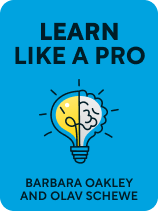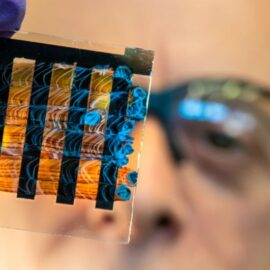

This article is an excerpt from the Shortform book guide to "Learn Like a Pro" by Barbara Oakley and Olav Schewe. Shortform has the world's best summaries and analyses of books you should be reading.
Like this article? Sign up for a free trial here.
What’s the best way to learn? Does active recall learning work with all types of material?
Whether you’re a student, professional, or lifelong learner, Learn Like a Pro by Barbara Oakley and Olav Schewe can help you become a more effective learner. The authors offer tips and techniques for excelling at the key elements of learning, including how to actively engage with your materials.
Continue reading to understand how active recall learning works.
How to Learn With Active Recall
The authors argue that the best way to learn is to actively engage with the material. By doing so, you’ll absorb far more information than when you engage with materials more passively. This is because active recall learning helps build longer and stronger neural connections.
(Shortform note: A recent study has shown that AI technology can play a role in helping people learn actively. The researchers found that incorporating an AI-based virtual helper in the learning process can improve learning during hands-on activities. The virtual helper combines physical and virtual reality elements to create an immersive learning experience. They found that when the AI helper was turned on, it encouraged students to engage in critical thinking and discussions, resulting in more thorough learning. When the AI helper was turned off, the students learned far less.)
To actively engage with your materials, they recommend a technique called active recall. To practice active recall, periodically look away from what you’re studying and try to remember what you just learned. It can also be helpful to explain the ideas in your own words or teach them as if you were explaining them to a grade-schooler. You can use this technique with any kind of material, such as text, videos, or lectures.
Active recall helps you internalize concepts. The authors say that you haven’t really learned if you can’t retrieve something from your memory, and that when you pull information from your memory, you help solidify it in your long-term memory. Active recall can also give you real-time feedback on how well you’re absorbing new information.
(Shortform note: Scott Young uses a different term—self-testing—to describe the process of active recall and agrees that it’s the best way to learn effectively as it cements information into your memory and provides you with feedback about how well you’ve learned the material. He outlines several methods to self-test as you’re learning, including using flashcards, creating quiz questions for yourself as you’re taking notes that you can try to answer later, and, as Oakley and Schewe also suggest, writing in your own words what you’ve learned after studying an idea.)
Why Memory Is Essential for Learning
You have two types of memory that work together to help you learn new information and skills—working memory and long-term memory. The authors explain that putting information into your long-term memory is the key to learning, and working memory plays a crucial role in this process.
(Shortform note: The science of memory and learning is complex, and there’s no absolute consensus among scientists and researchers about how memory and learning happen in the brain. Oakley and Schewe have drawn from several models and theories for this book. The one they emphasize for their theories of working memory and long-term memory is the Atkinson-Shiffrin Model, outlined in Make It Stick, which says that memory involves the encoding, storage, and retrieval of information and that there are different types of memory (such as short-term memory and long-term memory).)
Full, effective learning happens when information enters and stays in your long-term memory. This happens through neural connections: When you learn something, your neurons connect, forming pathways. When you learn something simple, like memorizing a phone number, those pathways are short. But when you learn something complex, the pathways grow longer and form webs of connections that cement learning into your long-term memory.
The more you use neural pathways, the stronger the bonds between the neurons become, and the better they become a part of your long-term memory. This is why, when you practice a skill many times or when you review and recall information often, you’re less likely to forget it. Lots of long and strong pathways in your long-term memory allow you to genuinely understand concepts and easily execute skills—for example, when you fully comprehend computer programming or master a kickflip on a skateboard.

———End of Preview———
Like what you just read? Read the rest of the world's best book summary and analysis of Barbara Oakley and Olav Schewe's "Learn Like a Pro" at Shortform.
Here's what you'll find in our full Learn Like a Pro summary:
- Proven techniques for mastering new skills and knowledge quickly
- How to improve your memory, increase your focus, and manage your time
- Practical tips for how to excel in academic settings






